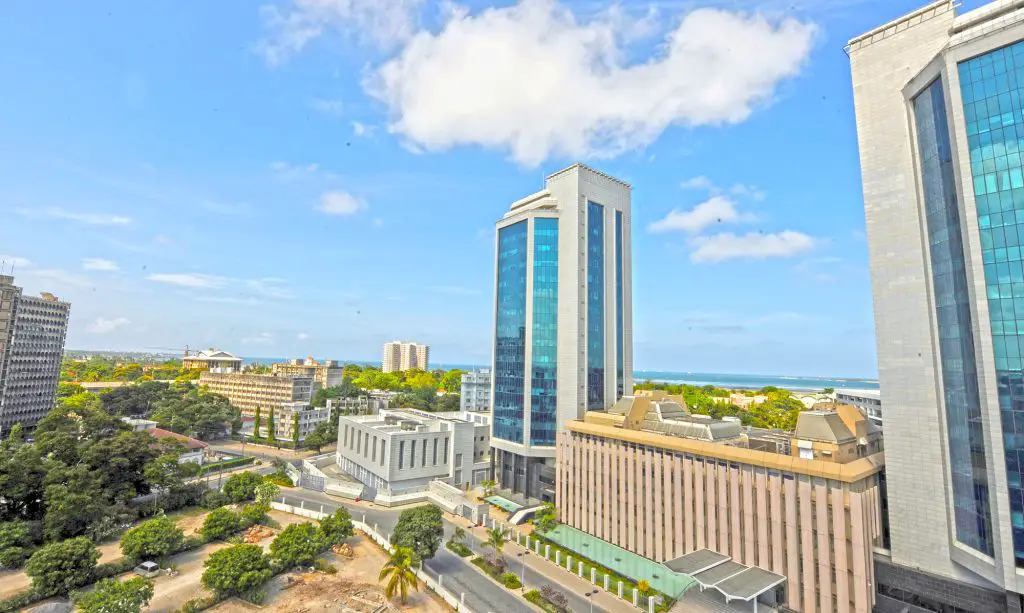- Africa’s new dawn: the rising role of digital and AI in agriculture
- Can Dangote Refinery Transform Africa Energy Ambition
- Gallup Survey: 80 per cent of Kenyan Workers Are Disengaged and Seek New Opportunities
- Madagascar Man Freed from 5KG Tumor After 15-Year Struggle
- How women in Africa are perceived and treated
- Sugar consumption in Kenya to Increase to 1.23 Million Tonnes
- Can Somalia and Turkey Oil deal Bring Change in Somaliland
- Remittances to Kenya dropped to $371.6 million in June, marking a six month low
Browsing: Tanzania’s Economy
Five years ago in 2015, Tanzania voted in a new president, Dr. John Magufuli. One of his very first moves was to stop the country’s annual Independence Day celebrations and instead the millions that would otherwise go into the traditional parade were directed to infrastructure—the congested New Bagamoyo Road expansion.
That year, to celebrate Independence Day, Tanzania held a national cleanup campaign. The President and his deputy, Vice President Honourable Samia Suluhu led the country in cleaning the environment.
I do not mean they signed some environment pollution documents; the president in person walked out of the State House and collected trash, not in his backyard, no, but all the way down to the filth–piled fish market, several meters from the State House.
If anything, the cleanup was symbolic of what was to come under his presidency. Little …
Tanzania has introduced the use of Electronic Tax Stamps (ETS) water bottles and soft, carbonated drinks. The move is meant to add on to the already registered increase in tax collection.
The Tanzania Revenue Authority (TRA) reported earlier this year that it has seen a 34 percent increase in revenue collection thanks to the use of the Electronic Tax Stamps (ETS) on branded products.
The ETS system was first rolled out in Tanzania early last year (15 Jan 2019) after regulations was passed to have all manufacturers in the country install an electronic tax stamp management system.
The tender went to a Swiss-based firm called SICPA which was contracted by the Tanzania Revenue Authority (TRA) to install and enroll all manufacturers, producers and importers onto the system.
To start with, the electronic stamps were used for cigarettes, wines, spirits, beer and other alcoholic beverages. It then begun to be applied …
The wheels of economy would have it that, where there is oil/gas exploration, the multiplier effect is that businesses blossom within and all along the value chain.
From accommodation that is hotels and guest houses to catering services ranging from high end restaurants for expatriates to Mama Ntilie for the wage workers and everything in between.
That is the smaller picture, the micro-economics of things, however there are sectors like construction, transportation, electricity and water supply, health and financial services. The list goes on and on, both for small, and medium sized companies, the opportunities available at and around an exploration site are enormous.
Also read: Oil price drop should nudge Africa towards clean energy
So what aisle local content in Tanzania’s energy sector? In this case let’s focus on the oil and gas sectors and more so the oil sector which is still at the exploration stage. …
Tax collection is pristine to Tanzania’s development landscape, that’s they the Tanzania Revenue Authority (TRA) is striving to forge a Tanzanian success story via revenue collection which rose by 66.7 per cent in four years.
TRA Deputy Commissioner General Mr. Msafiri Mbibo announced yesterday during a press conference in commercial-pulse Dar es Salaam that: during the last four financial years, Tanzania has collected over $25.3 billion, pinning the raise to taxpayers compliance, arguing that, it is a direct result of transparency in the authority’s operations and enhancing the overall tax administration system.
Tanzania has its fair share of taxing hurdles, just like any other African nation, as TRA pinpoints the weight of significant tax-paying lies on the shoulders of over 3 million taxpayers (by October 2019) in Tanzania, which rose from 2.2 million.
On the same note, on Sunday November 24, Tanzania’s President John Magufuli, highlighted on the importance of …
Exports from Tanzania have slightly increased, according to a recent economic review from the National Bureau of Statistics (NBS).
NBS’ second-quarter report, indicates that the economy has grown to 7.2 percent, anchored by the Information and Communications Technology (ICT), construction and water sectors, hence—still the external sectors records significant deficits, sparked by importation of higher goods imports.
The report showed that the overall balance of payments was a deficit of $37.7 million in the year ending September 2019 compared with a deficit of $276.4 million in the year ending September 2018. Meanwhile the current account deficit widened to over $2,1 billion from over $1.8 billion, owing to higher goods imports, particularly capital and intermediate goods which are used for production.
However, on the other side of the sector, the report argues that: Tanzania’s holds sufficient reserves to sustain its operations for over 6.1 months of projected imports of goods and …
Approximately 10% of Tanzania’s landmass is covered by freshwater.
This essentially means that nearly 4,868,424 million hectares of wetlands can generate billions of dollars in revenue earnings for the country if harnessed correctly. When looking at this in the greater context of East Africa, Tanzania is the leading country with the largest freshwater reserves, an economic advantage over its neighbors.
The Great Lakes region of East Africa, that encompasses Kenya, Uganda, Tanzania as the main countries, are currently undergoing dynamic changes with respect to various water demands occurring across the region.
Still, Tanzania remains to reap significant rewards. The Food and Agriculture Organization (FAO) place Tanzania to be an owner of 96. 27 km3 of renewable water resources per year, which corresponds to 2,266 m3 per person and year, despite being unevenly distributed over time and space, still these numbers give way more financial leeway to Tanzania’s economic …






